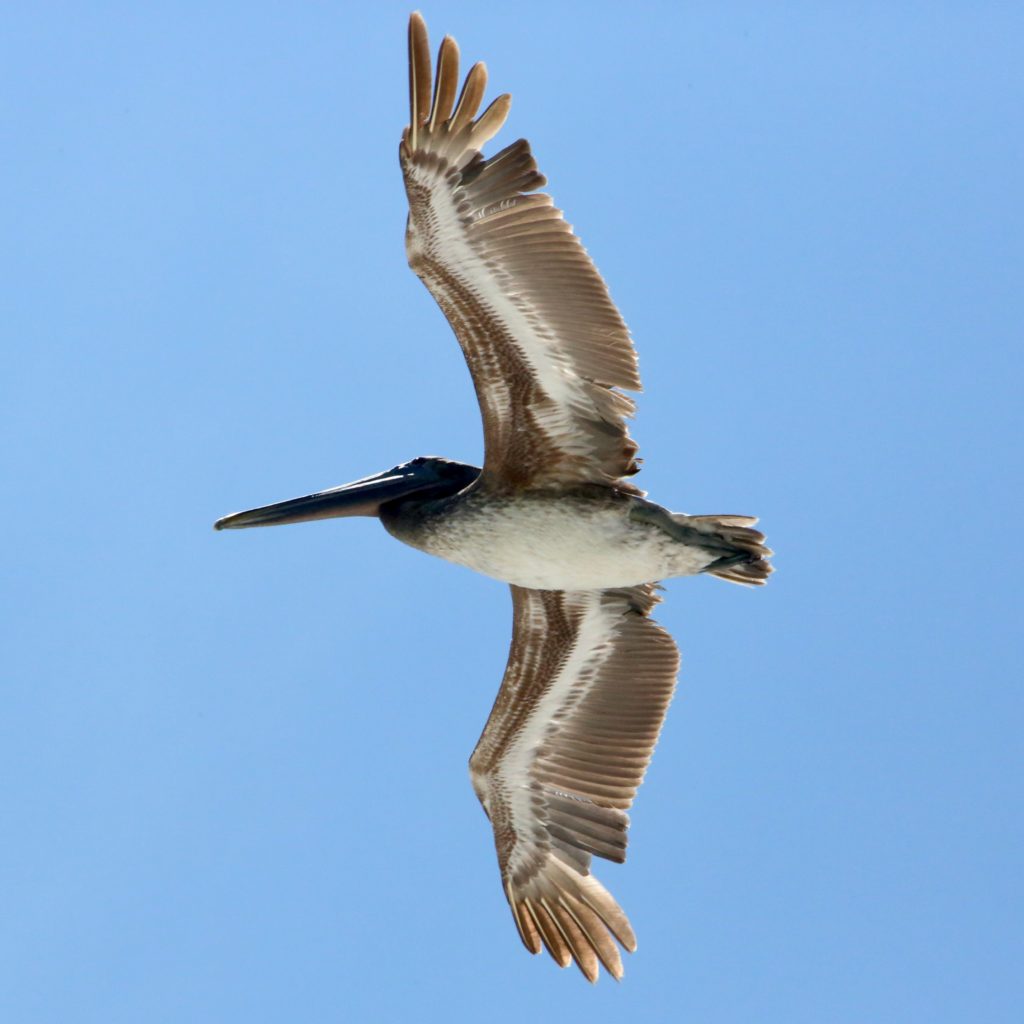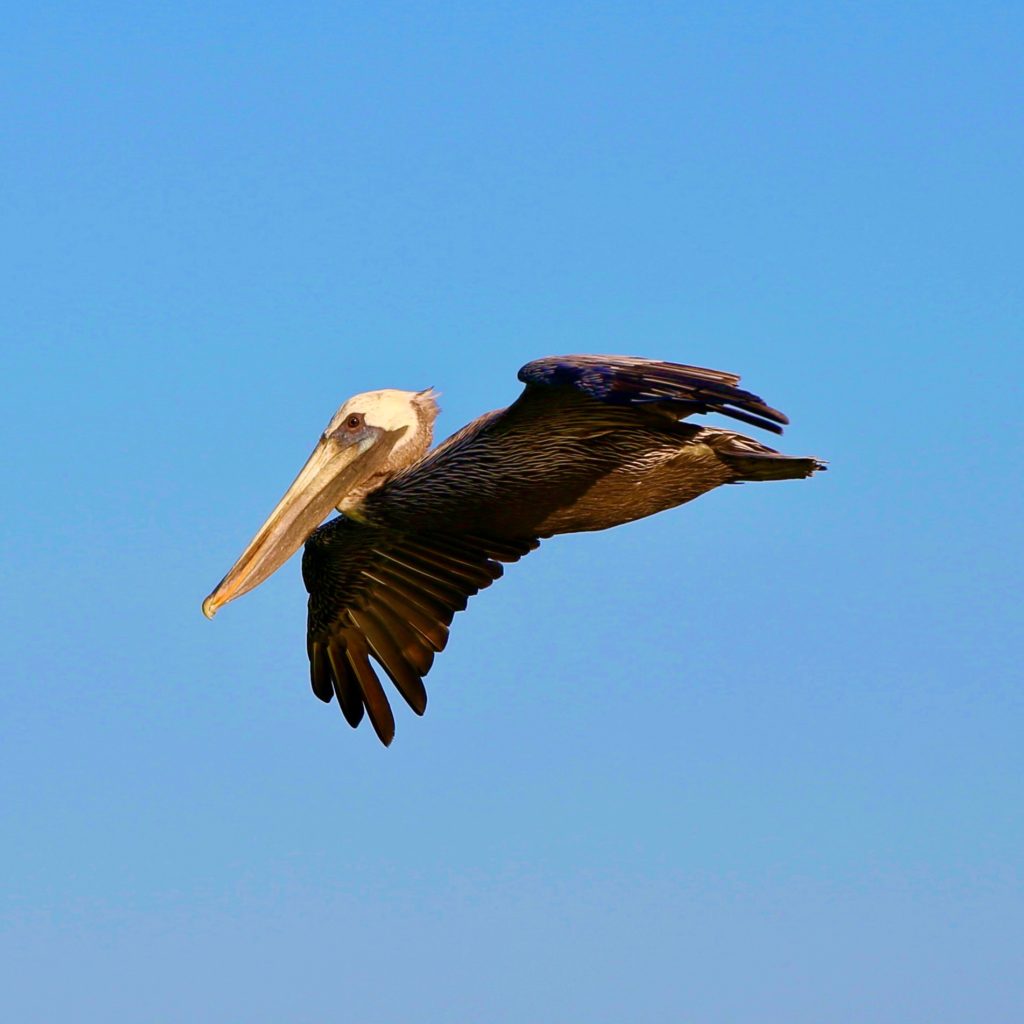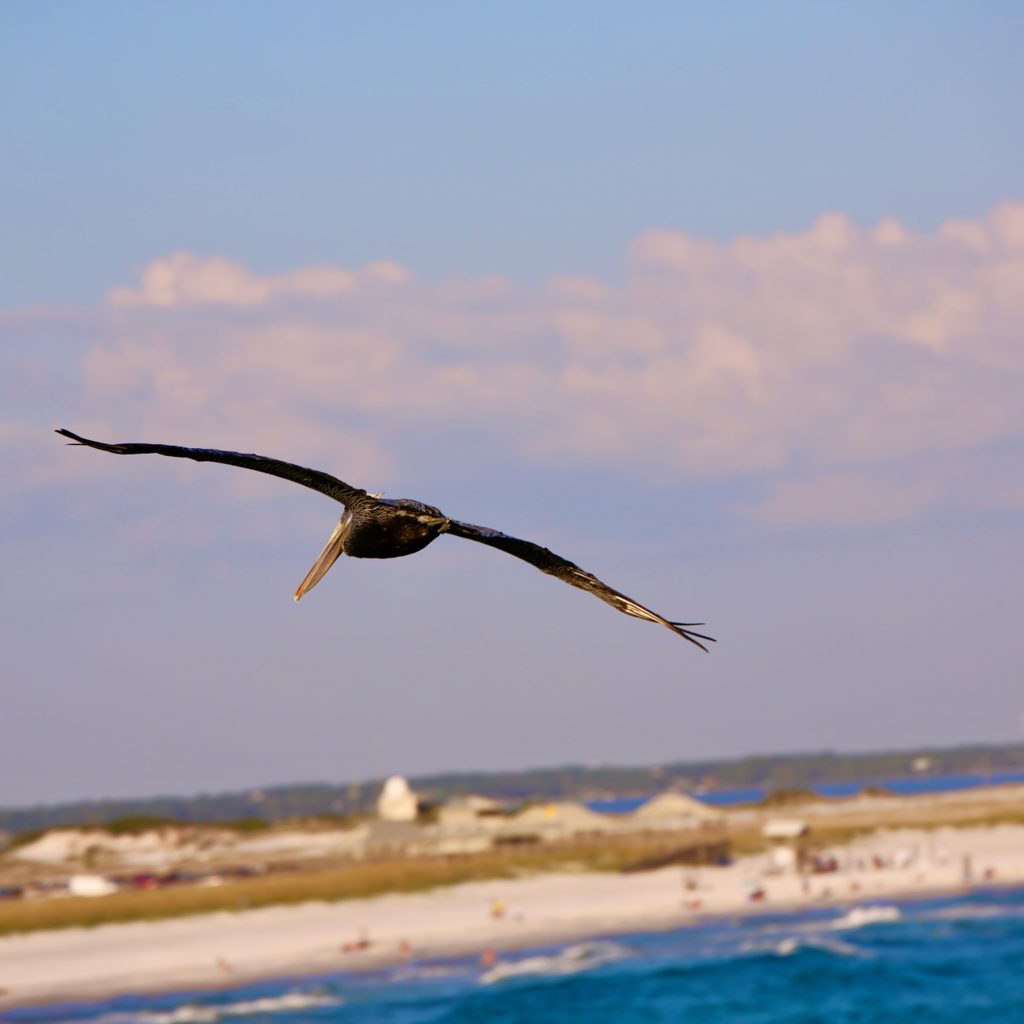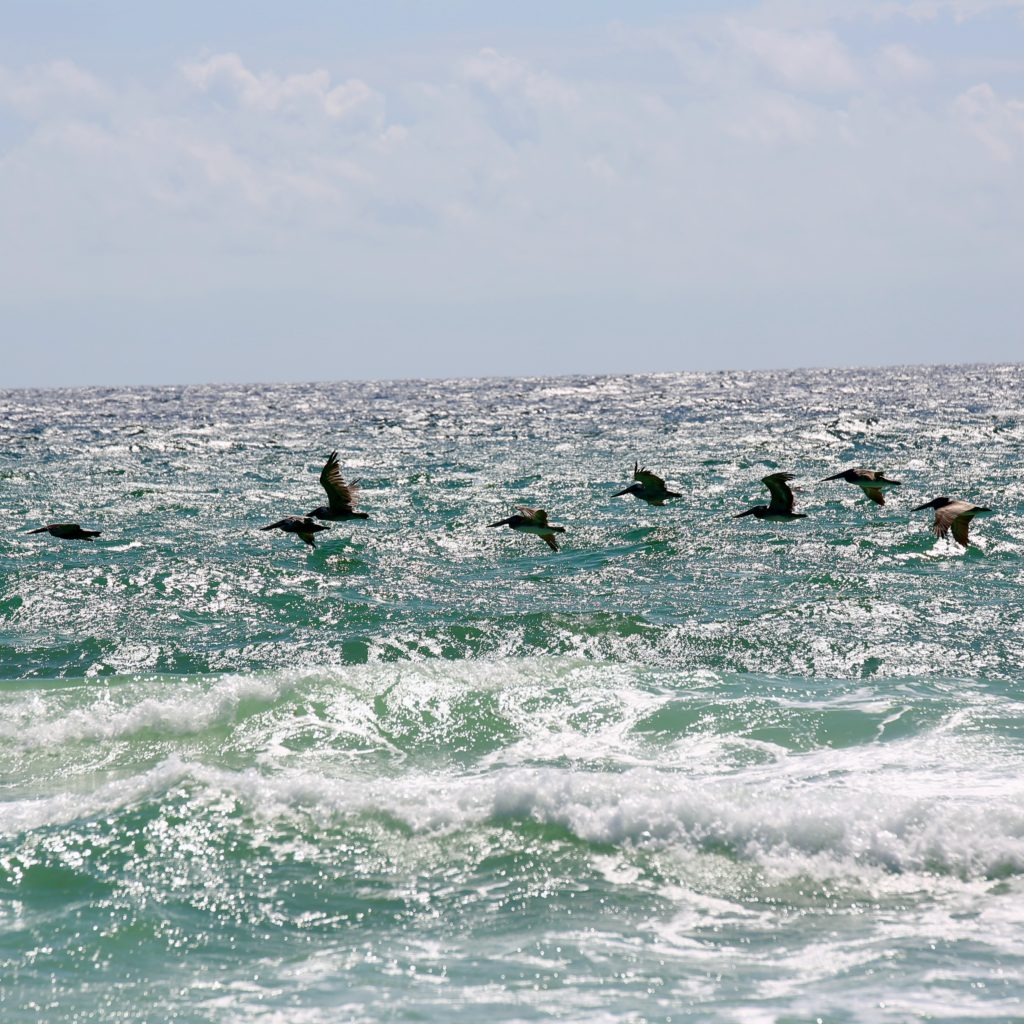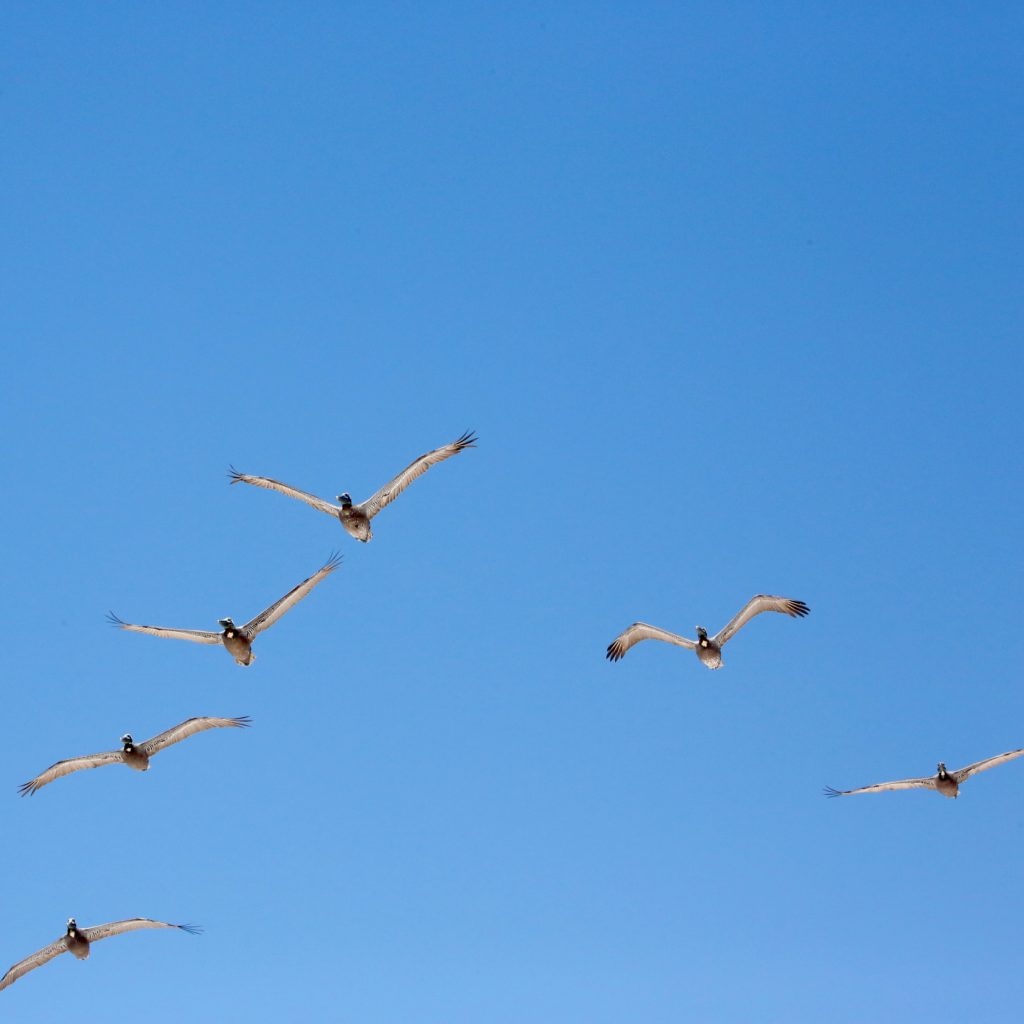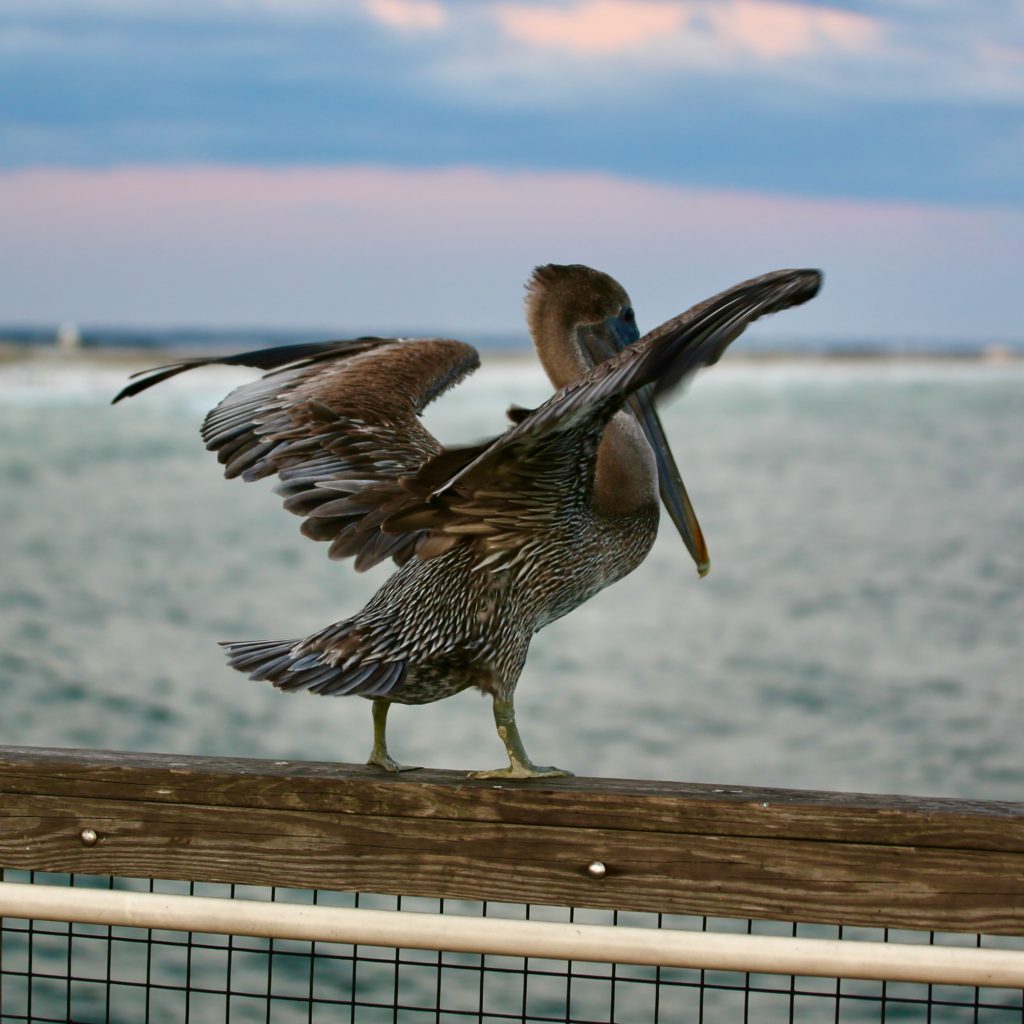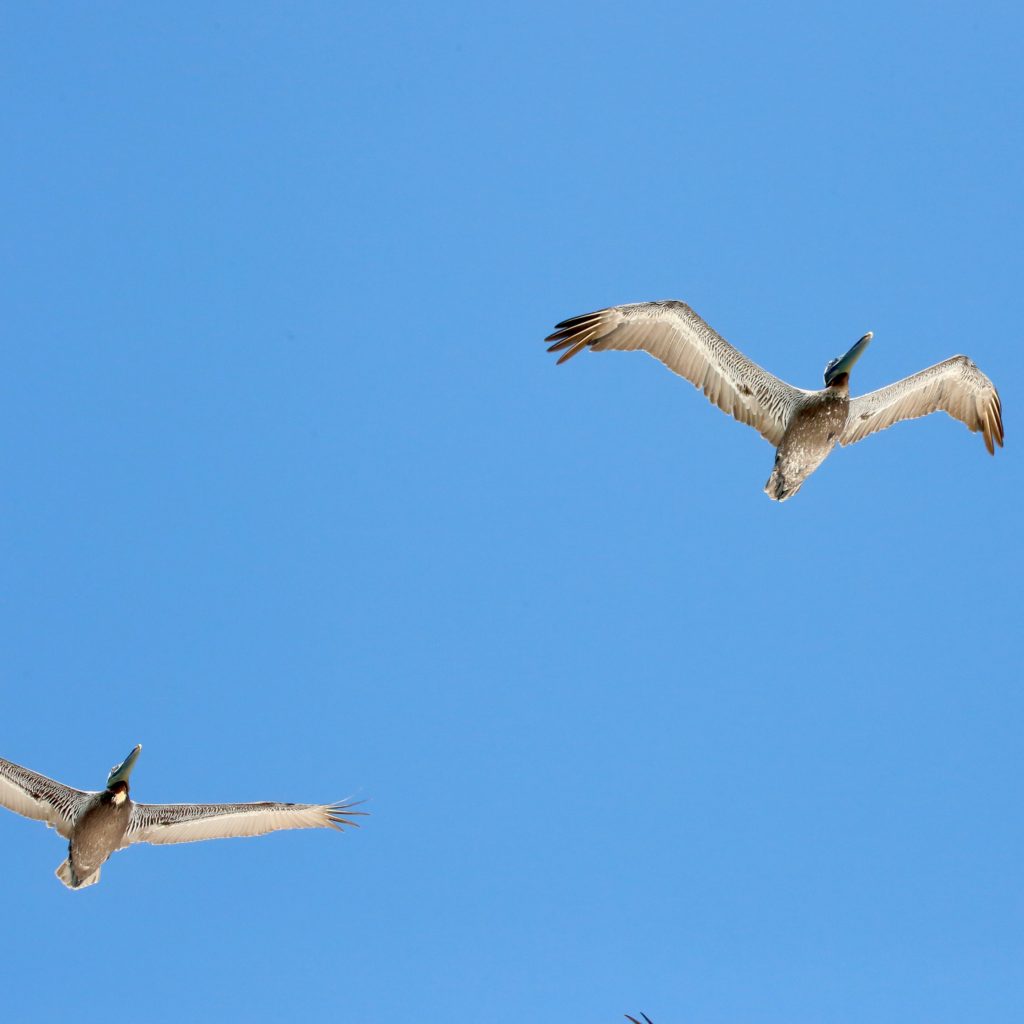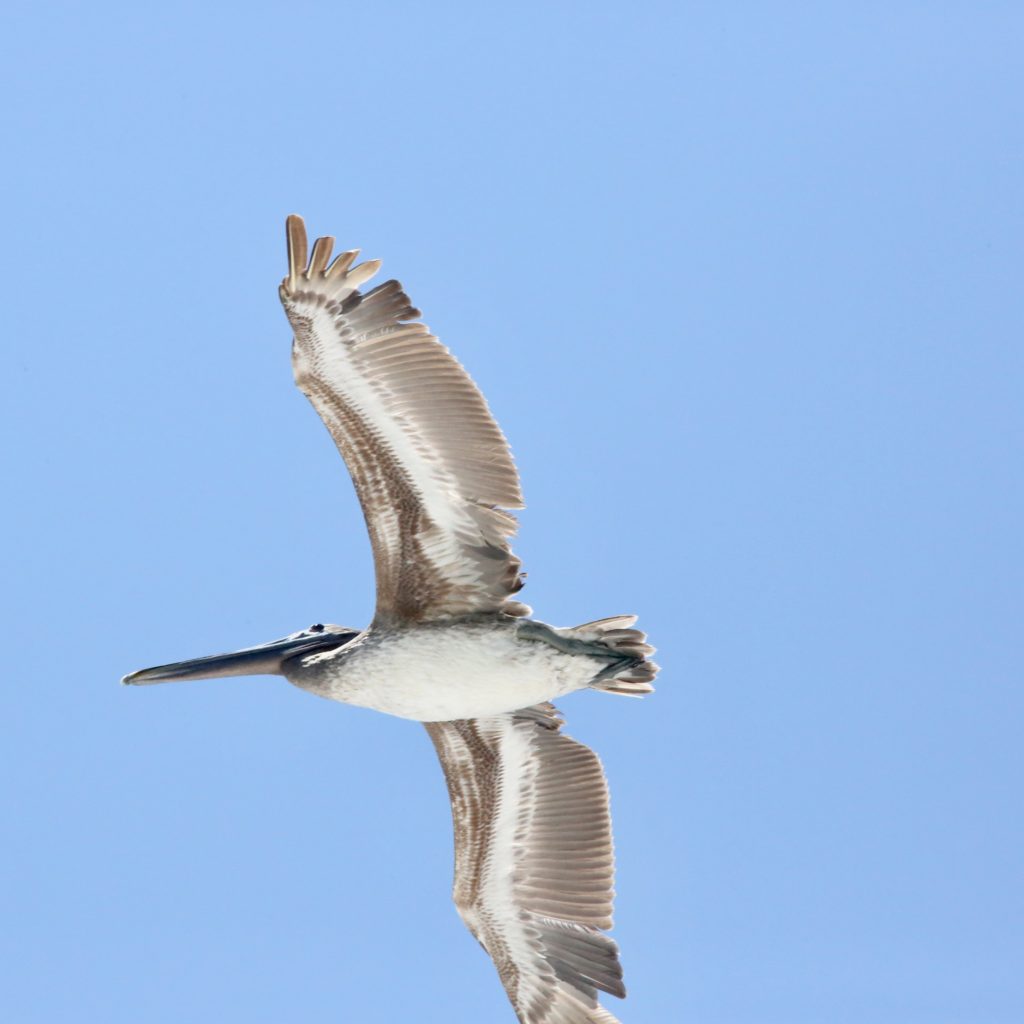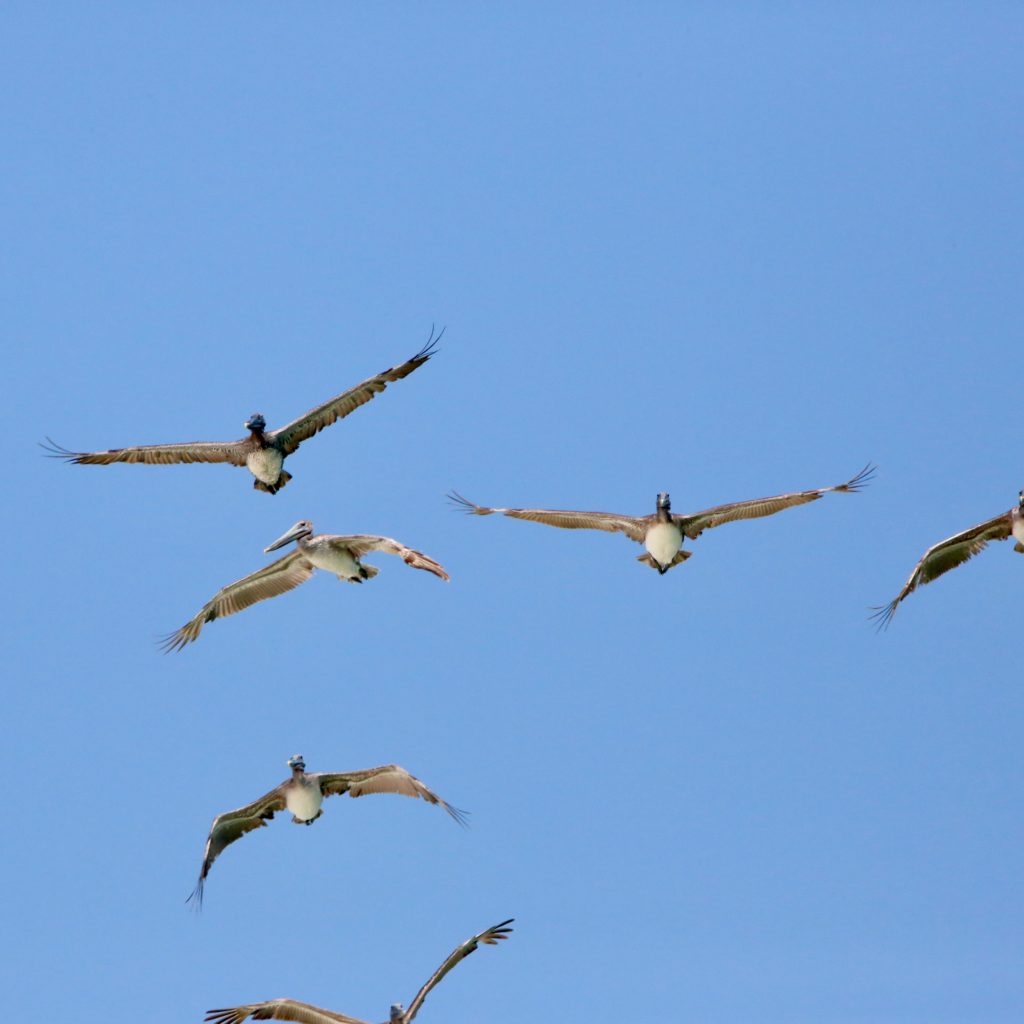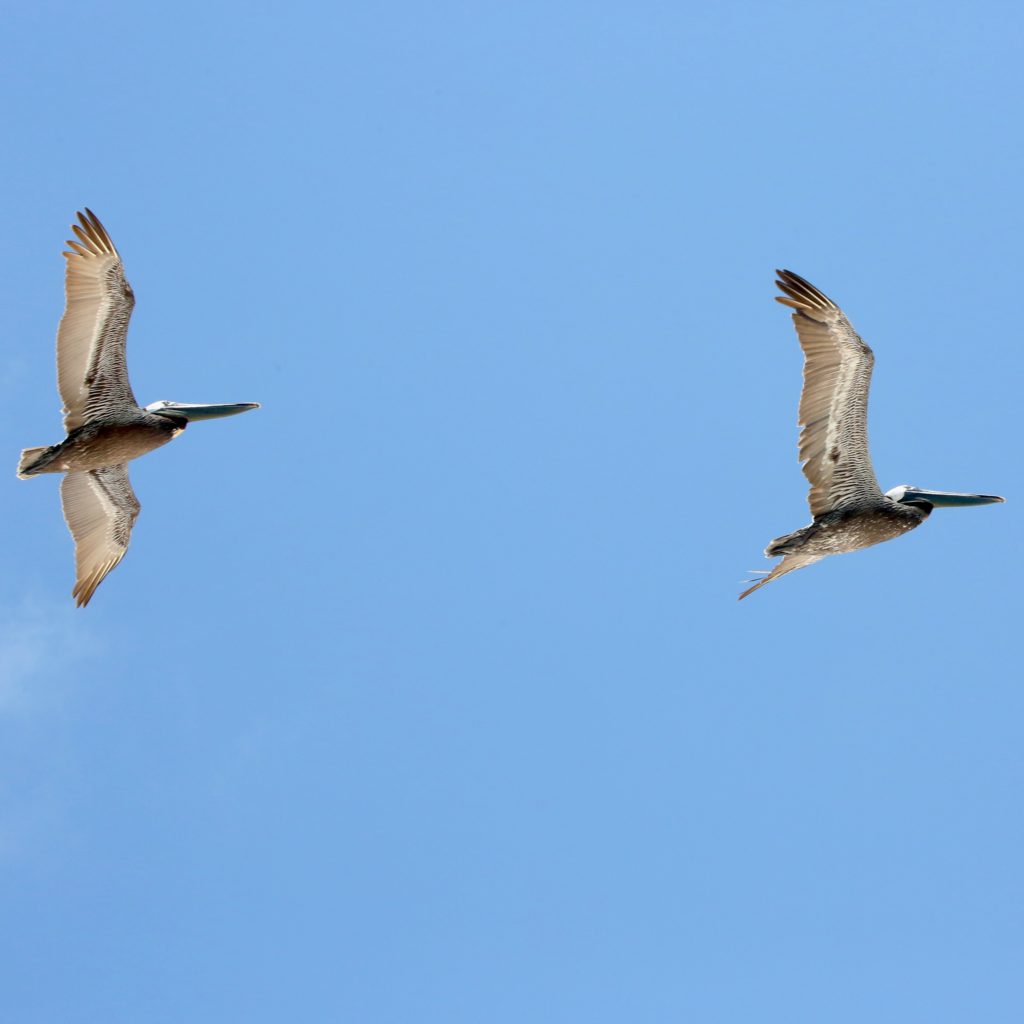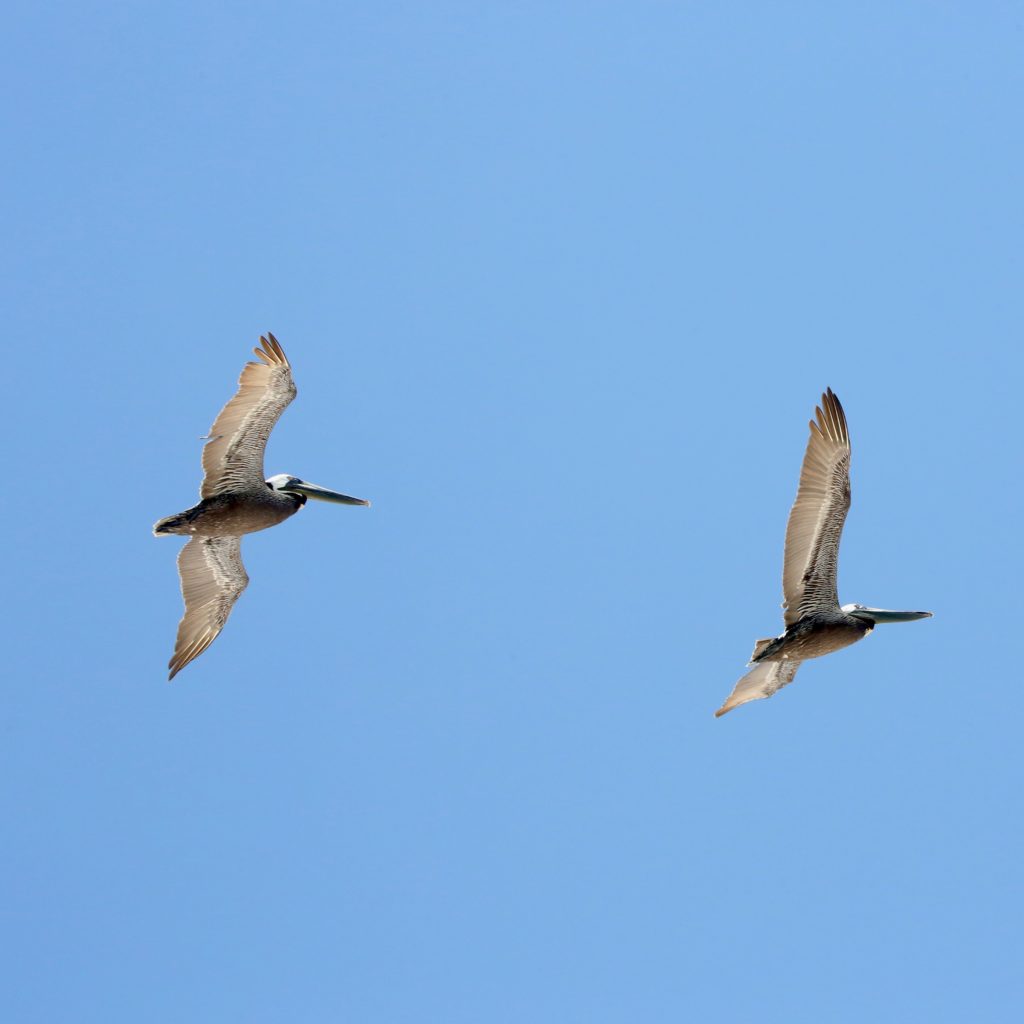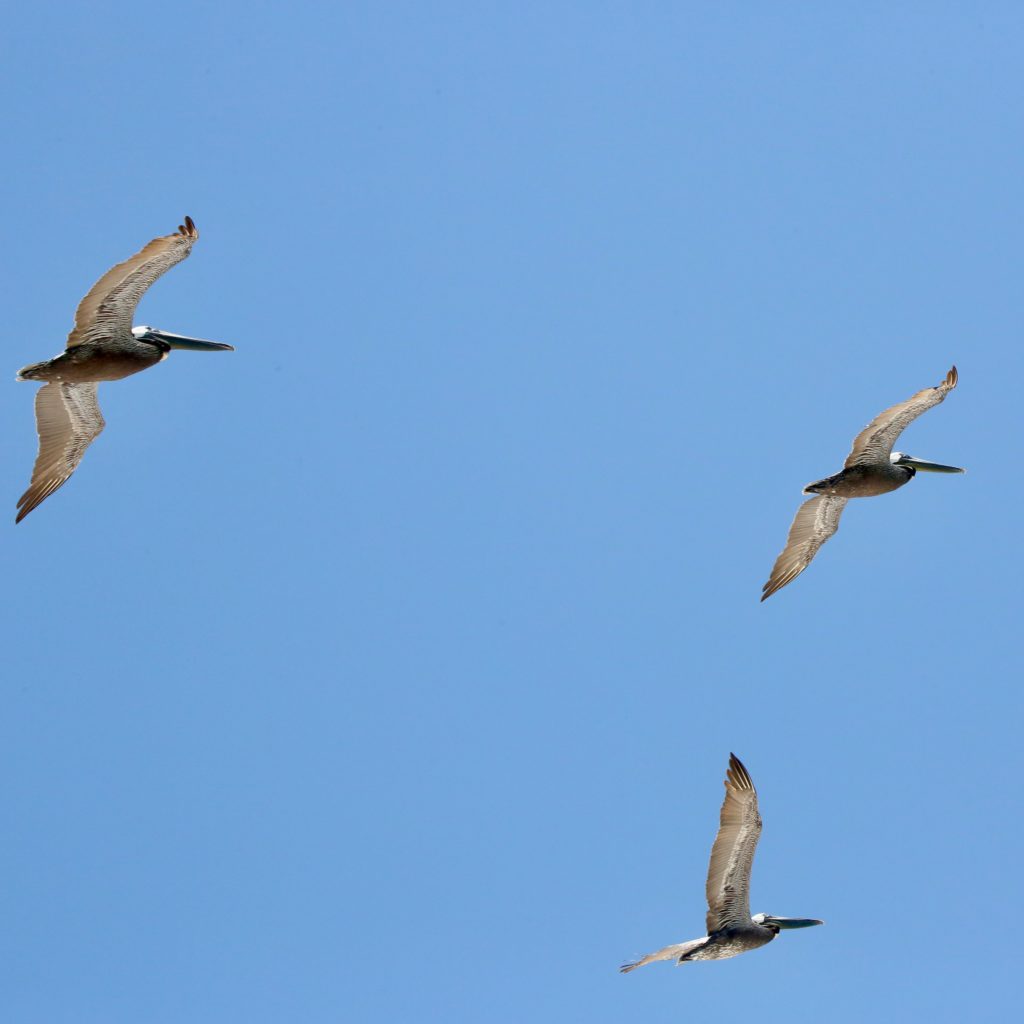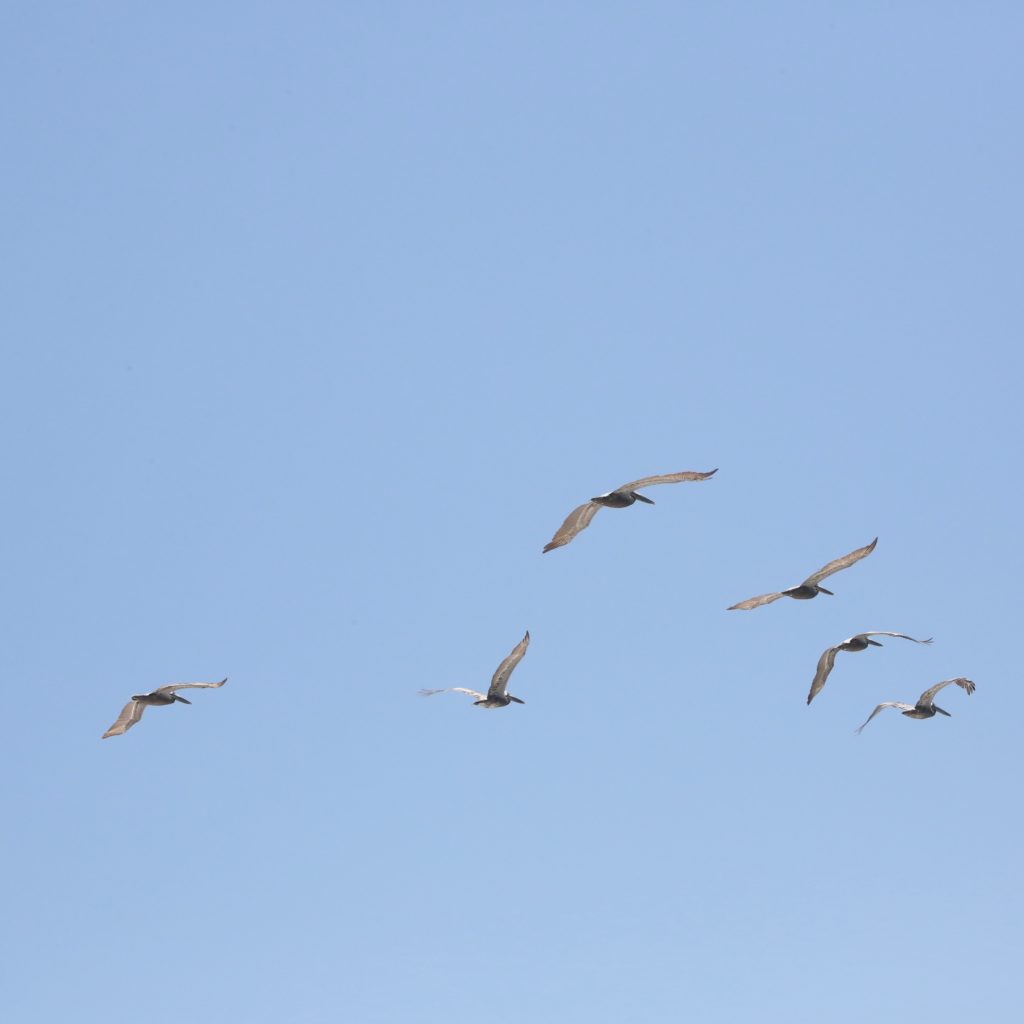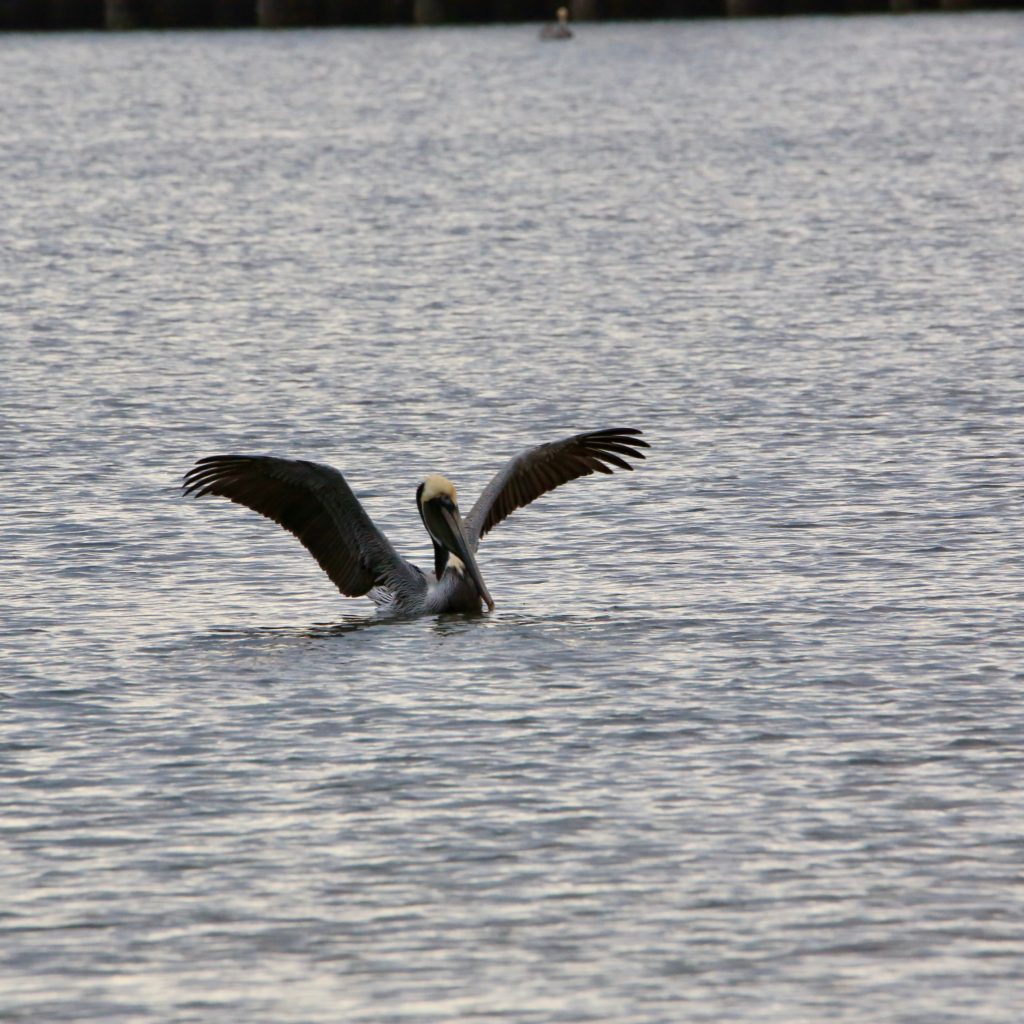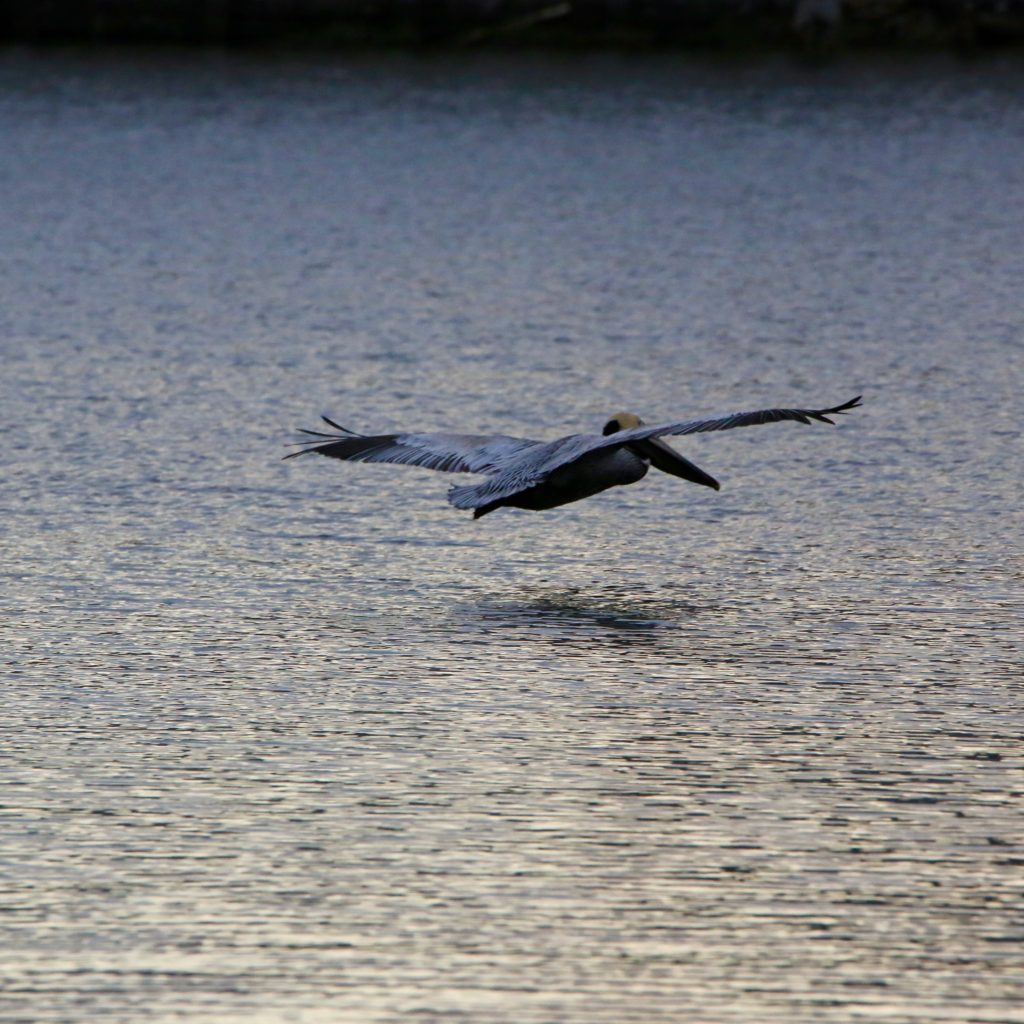
The Brown Pelican
A Brown Pelican is a fun bird to see while bird watching. Below are some tips to help you identify Brown Pelicans. We have also put together a list of fun Brown Pelican t-shirts, Brown Pelican bird patches, birdhouses, bird feeders, binoculars, stickers, and other fun bird-watching items.
About Brown Pelicans
It is a large elegant pelican with an over-sized bill, ‘S’ shaped neck, and huge dark body. They move in squadrons gliding above the southern and western coasts of North America. They plunge headfirst using the impact on the water surface to stun the small fish before grabbing them with their big bills. They faced extinction due to pests.
Description and Identification
Brown Pelicans are one the larger seabirds found along North American coasts but are the
smallest of the eight pelican species. They are stocky birds approximately 40 – 60 inches
long with thin necks, long bills, and a stretchy throat pouch for catching fish while they dive.
They have long and broad silvery wings that make a bowed appearance while they are in
flight, with a wingspan ranging to 78.7 inches. Adults are gray-brown birds with yellow heads
and white necks. During breeding, the plumage and most of the neck turns reddish-brown
with short, deep chestnut feathers on the crest. Juveniles have gray and brown heads,
necks, and bodies, with pale white bellies and breasts.
Brown Pelican Color Pattern
Brown Pelicans as their name suggests are brown birds with a yellow-colored head held up by a white neck. During the breeding season, their back and side of the necks turn red-brown. Juvenile pelicans are brown or gray from their head, down to their neck and upper body. Their underside is white in color.
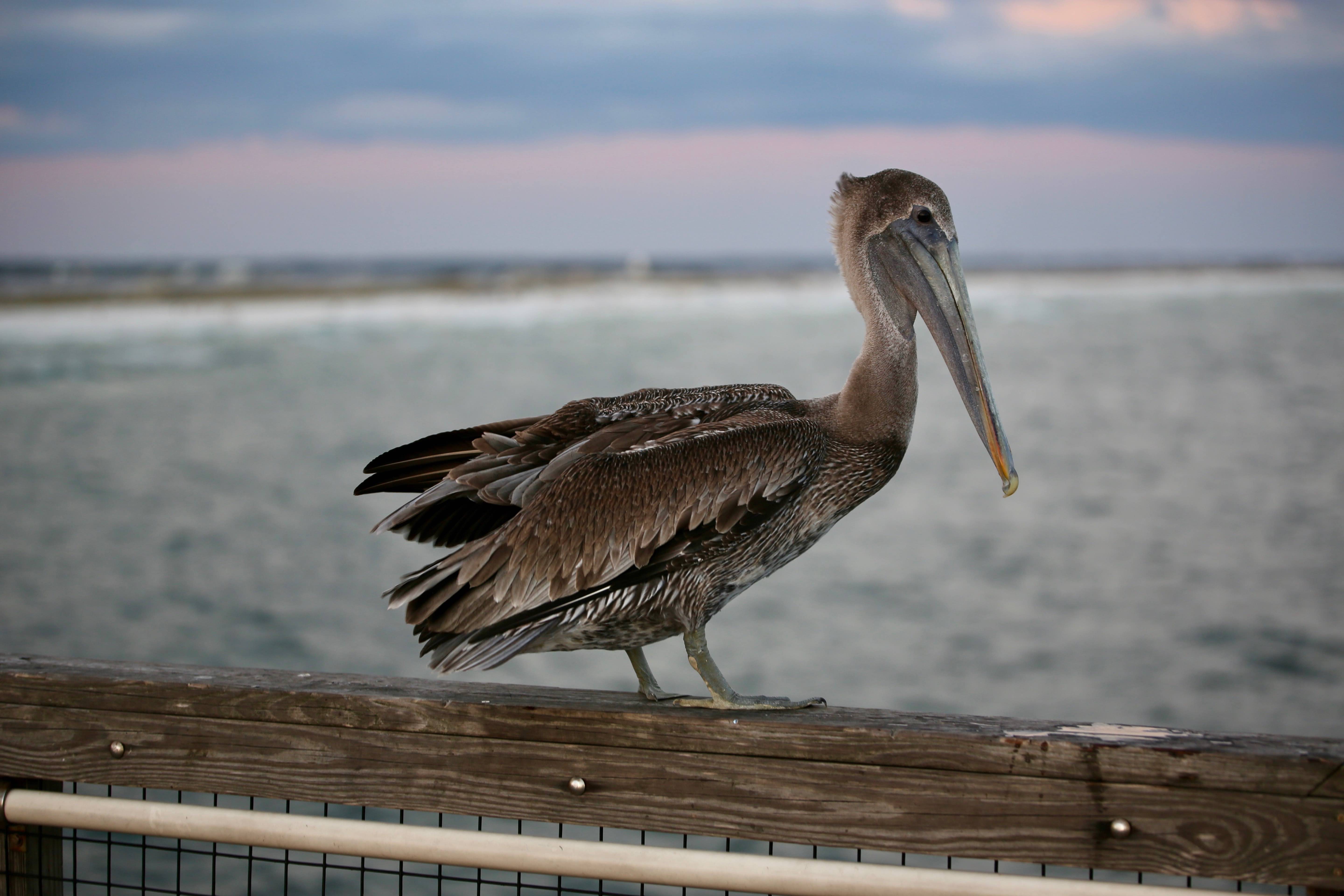
Brown Pelican Size
The brown pelican is slightly smaller than the white pelicans and larger than Herring Gull. Adult males and females have respective measurements as follows:
- Length 100 – 137 cm
- Weight 2000 – 5000 g
- Wingspan 200 cm
Brown Pelican Behavior
They have an awkward walk on land but are strong and powerful swimmers and fliers. While flying they use ‘V’ shaped formations from land to their fishing grounds. They are the only known Pelican to make a head-first dive into the water trapping fish. They come together in flocks made of several thousand pairs. Males play the crucial role of protecting a nesting site and set up a post on a perch to attract a female, this might take up to 3 weeks.
Brown Pelican Food
Brown Pelicans are piscivores, meaning that they primarily consume fish. Their diet includes
marine life that it obtains by diving down into the shallow waters and foraging through the schools of fish. Once caught, the pelicans empty their throat pouch of water and swallow the
fish whole. A majority of their diet consists of menhadens and anchovies. Ornithologists
assume that menhadens can make up as much as 90% of their diet while anchovies are
important for the nesting success of the birds. The other fish include mullet, herring, and
sailfin mollies. They also consume invertebrates like prawns. Brown Pelicans have also been
observed to scavenge dead animals if food sources are scarce.
Brown Pelicans mostly eat small fish swimming near the water surface. Foraging Pelicans hunt for fish in flight and make head-first dives into the water.
Brown Pelican Habitat
These pelicans are year-long residents of coastal habitats along the Atlantic and Pacific
coasts of North America. These birds are a strictly marine species and mainly inhabit marine
subtidal, warm estuarine, and marine pelagic waters. They are also found in mangrove
swamps and have shown a preference for shallow waters near salty bays and beaches. It
rarely flies more than 20 miles from the coast and avoids the open sea as much as possible.
They generally live in estuaries and breed mostly on barrier islands, natural islands in
estuaries, and islands made of reuse from dredging. They can be found in mangrove islets
near Florida and dry, rocky, offshore islands on the western coast. Outside of nesting and
feeding, Brown Pelicans can be found resting in sandbars, pilings, jetties, breakwaters,
mangrove islets, and offshore rocks. Juveniles can sometimes be found straying further
inland towards freshwater sources.
They breed between Maryland andVenezuela and establish coastal marine territories for breeding and residing in.
Range and Migration
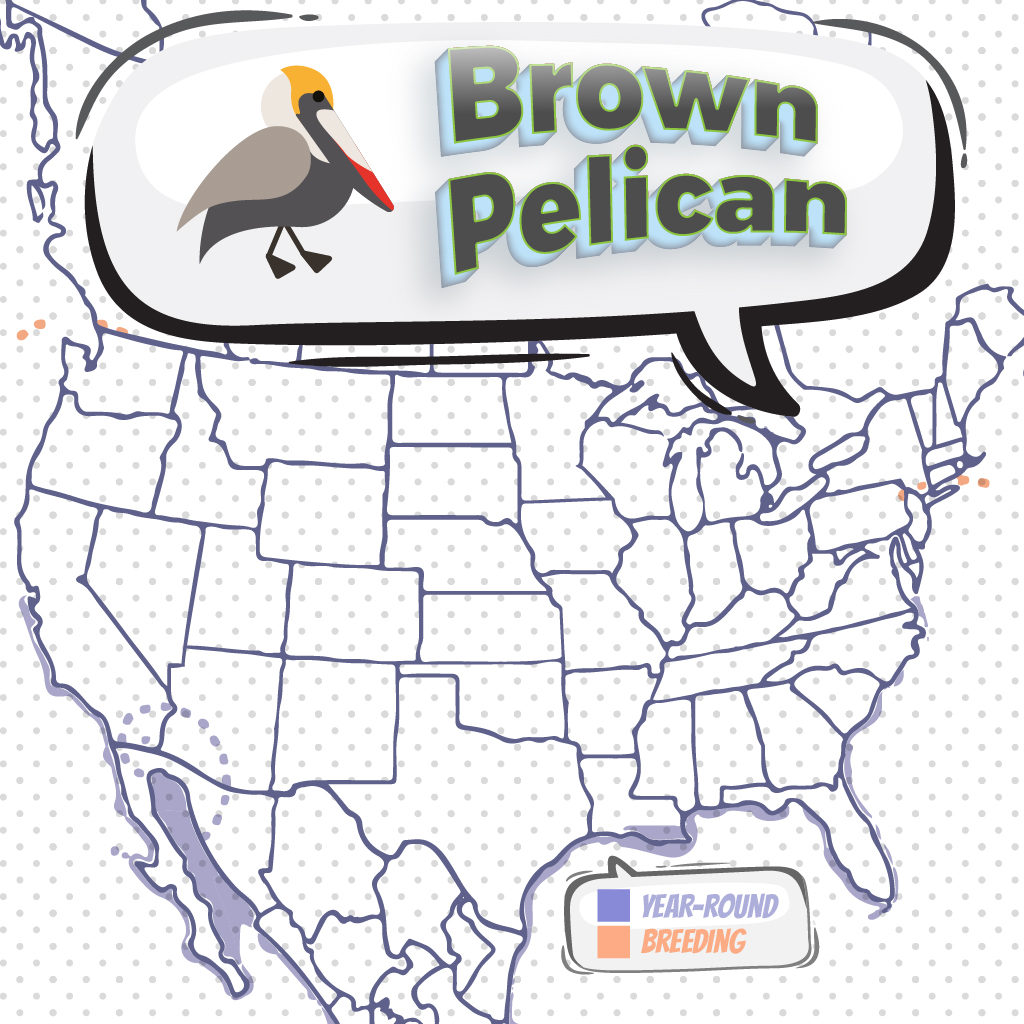
Brown Pelicans are birds with enormous bills, sinuous necks, and dark bodies that are
frequently visible along the Atlantic coast from New Jersey till the mouth of the Amazon river,
and along the Pacific coast from British Columbia till northern Chile. They are well-known
among conservationists for making an excellent recovery from being on the brink of
extinction due to DDT pesticides in the 1970s. Most of these pelicans found along the coasts
of southern United States, Mexico, Central America, and northern South America are
permanent residents. Some communities exhibit dispersive characteristics, – meaning that
the birds move from their birth sites to new breeding sites – while few communities from the
northern areas of the continent move southwards during the winter. Vagrants can also move
further southwards from the Amazon sometimes, staying by the coasts of Brazil for
elongated periods of time.
Brown Pelican Lifecycle
Brown Pelican pairs are monogamous, staying together throughout the breeding season. Female Brown Pelicans lay 2 to 4 eggs per breeding season. The parents incubate the eggs together using their feet. It takes hatchlings 77 to 84 days before leaving the nest.
Brown Pelican Nesting
Nesting sites are selected by the males on the ground or on exposed treetops. Once the site
is selected, they begin to attract females by swaying their heads. These sites are generally
on the ground where there is dense vegetation at a sufficient height from the sea level to
prevent flooding. The nests range from depressions in the ground lined with vegetation to
well-built structures on treetops, with new materials constantly added as the female
incubates.
Ornithology
Bird Watching Academy & Camp Subscription Boxes
At Bird Watching Academy & Camp we help kids, youth, and adults get excited and involved in bird watching. We have several monthly subscription boxes that you can subscribe to. Our monthly subscription boxes help kids, youth, and adults learn about birds, bird watching, and bird conservation.
Bird Watching Binoculars for Identifying Brown Pelicans
The most common types of bird watching binoculars for viewing Brown Pelicans are 8×21 binoculars and 10×42 binoculars. Bird Watching Academy & Camp sells really nice 8×21 binoculars and 10×42 binoculars. You can view and purchase them here.
Brown Pelican T-shirts
If you love the Brown Pelican you should purchase a Bird Watching Academy & Camp T-shirt. To help support bird conservation we donate 10 percent to bird conservation activities.
Brown Pelican Iron On Patches
Kids, Youth, and Adults love to collect our Bird Watching Academy & Camp iron on patches. Our bird watching patches help you keep track of the birds you have seen an identified. You can also display the patches on our Bird Watching Academy & Camp banners.
The Brown Pelican is a great iron on patch to start your collection with. The patches are durable and can be sewn on or ironed on to just about anything.
Brown Pelican Stickers
Stickers are a great way for you to display your love for bird watching and the Brown Pelican. We sell a monthly subscription sticker pack. The sticker packs have 12 bird stickers. These sticker packs will help your kids learn new birds every month.
Bird Feeders For Brown Pelican
There are many types of bird feeders. Here are our favorite bird feeders for your backyard. We use all of these bird feeders currently. Kids will have a great time watching birds eat at these bird feeders. Using this collection of bird feeders will provide a wide variety and many types of birds.
Best Bird Houses for Brown Pelican
There are many types of birdhouses. Building a birdhouse is always fun but can be frustrating. These 4 birdhouses have become our favorites. Getting a birdhouse for kids to watch birds grow is always fun. We spent a little extra money on these birdhouses but they have been worth the higher price and look great.


